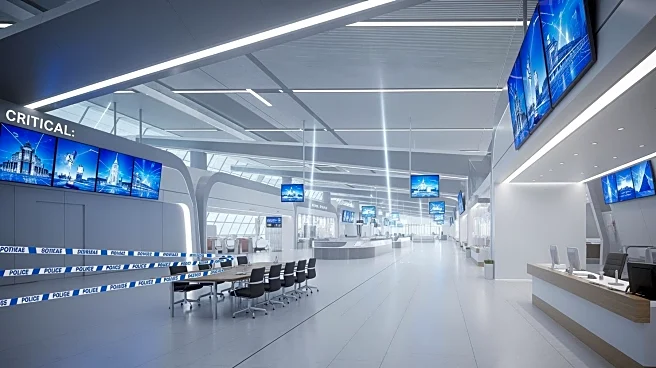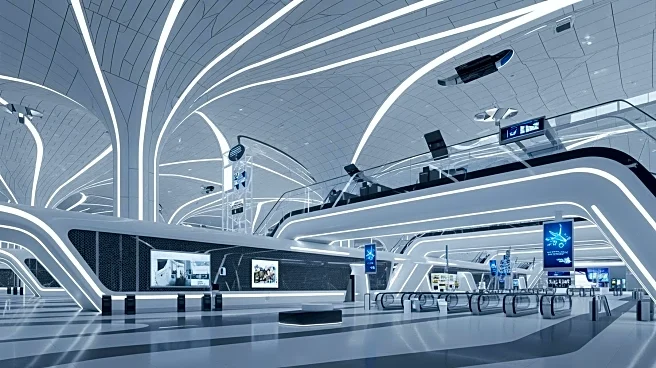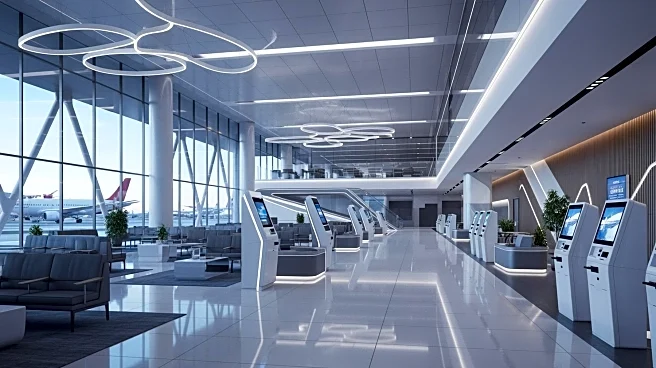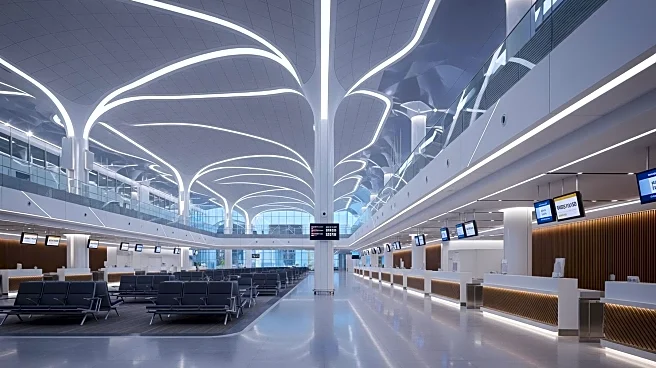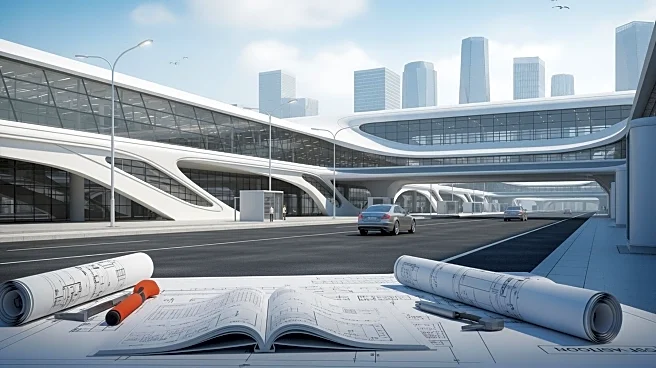What's Happening?
The $1.7 billion Terminal Modernization program at Pittsburgh International Airport has reached substantial completion. The project, led by a joint venture of PJ Dick, Hunt Construction Group, and Turner
Construction, replaces outdated facilities with a new 811,000-square-foot terminal and a 1.1 million-square-foot parking structure. This modernization effort consolidates airline operations and public spaces under one roof, adding nearly four miles of new roadway and a 1,300-foot dual-level bridge linking the new terminal directly to the airside complex. The project, which began in 2021, utilized 90% of materials and labor from within the region and did not rely on local tax dollars.
Why It's Important?
The completion of the Pittsburgh airport terminal modernization is a significant milestone in U.S. infrastructure development, enhancing the travel experience for passengers and boosting regional economic growth. The project is expected to improve operational efficiency and passenger flow, while also providing a sustainable and resilient infrastructure. The initiative supports local workforce development through the PIT2Work apprenticeship program, which offers on-the-job training in building trades. This project is part of a broader trend of billion-dollar terminal projects across the country, reflecting a national push towards modernizing airport facilities.
What's Next?
With the completion of the terminal modernization, Pittsburgh International Airport is set to enhance its service offerings and operational capabilities. The airport aims to achieve LEED Gold certification, emphasizing sustainability in its operations. The new infrastructure will likely attract more airlines and passengers, boosting the local economy. The PIT2Work program will continue to provide training opportunities, fostering a skilled workforce in the region. As other airports across the U.S. undertake similar modernization projects, Pittsburgh's success may serve as a model for future developments.
Beyond the Headlines
The modernization of Pittsburgh International Airport highlights the importance of sustainable infrastructure development. The project's focus on using regional materials and labor supports local economies and reduces environmental impact. The integration of a solar- and natural gas-powered microgrid demonstrates a commitment to energy independence and resilience. This approach may influence future infrastructure projects, encouraging a shift towards sustainable and community-focused development.
